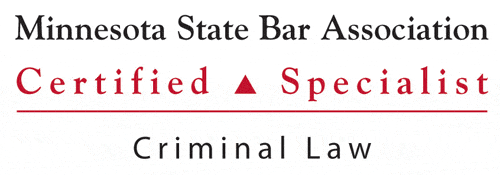In Minnesota, as well as the rest of the United States, sentencing guidelines for those convicted of crimes are based on a belief that more serious crimes should be punished more harshly. Also, repeat offenders should face more serious consequences.
Presumptive sentences are based on the severity of the crime perpetrated and the offender’s record. Of course, this is a simplified explanation — especially in Minnesota.
Minnesota has enacted new drug sentencing laws. They changed the game a bit as to what one can expect when being sentenced for a drug crime under presumptive sentencing guidelines. Here is what you need to know.
High-Level Drug Offenses in Minnesota
For first- and second-degree drug offenses, the severity of presumptive sentencing was lowered by a level. This is noteworthy because it works to reduce the presumptive sentence for high-level drug offenders.
Sale or possession of drugs, which are considered ordinary offenses, had their levels lowered but there is the category of aggravated offenses to deal with. An aggravated offense is now sentenced at one severity level higher than an ordinary crime.
New Calculations on the MN Drug Offender Grid
Another important change made to sentencing guidelines impacts how drug offenses are calculated. In the past, felony drug offenses were determined off of a standard sentencing guideline that had only sex offenses on a different grid from all other crimes.
Now, a drug offender grid breaks it down into nine levels that range from high, D9 level, to low, D1. So when a presumptive sentence is calculated, any previous criminal history is taken into account and matched on a grid with the severity of the drug offense being charged.
Some will fall into a presumptive sentence category while others will fall into a “stayed” sentence category. Stayed sentencing is when an offender will face probation instead of jail.
Minnesota Reform on Mandatory Minimum Sentences
In Minnesota, mandatory minimum sentences do not exist based on any prior drug convictions in the third, fourth, or fifth degree.
The only prior drug offenses taken into account are first- and second-degree charges within the last 10 years. Only then would a mandatory minimum sentence apply.
For example, if you are convicted of a first-degree drug offense and you have any prior convictions in the first or second degree, then you can face a mandatory minimum sentence of 48 months.
A second-degree offense along with prior conviction can land you in prison for up to 36 months. So, while the presumptive sentences guidelines have changed, you can see that they’re still quite stringent.
The drug laws themselves have changed in Minnesota, too. All charges of possession or sale must now be supported by a threshold amount of the drug for each offense level.
Many of the threshold amounts were made higher in an attempt to focus on higher-level drug offenders and keep low-level offenders from facing penalties that were much too severe.
Don’t Take MN Drug Charges Lightly
It’s important to note that even with the changes to drug laws in the last few years in Minnesota, drug offenses are still taken seriously.
The penalties for drug offenses can still carry harsh penalties in the state, so it’s nothing to take lightly if you’re facing drug charges, even if you are presumed innocent until proven guilty in a Minnesota court of law.
About the Author:
Christopher Keyser is an AV-Preeminent rated criminal and DWI defense attorney based in Minneapolis who is known for fighting aggressively for his clients and utilizing innovative tactics to get the most positive results. He has been featured in numerous media outlets due to the breadth and depth of his knowledge and named a Certified Specialist in Criminal Law by the Minnesota Bar Association. Mr. Keyser is Lead Counsel rated, and he has received recognition for his criminal law work from Avvo, Expertise, Super Lawyers, The National Trial Lawyers, and more.







